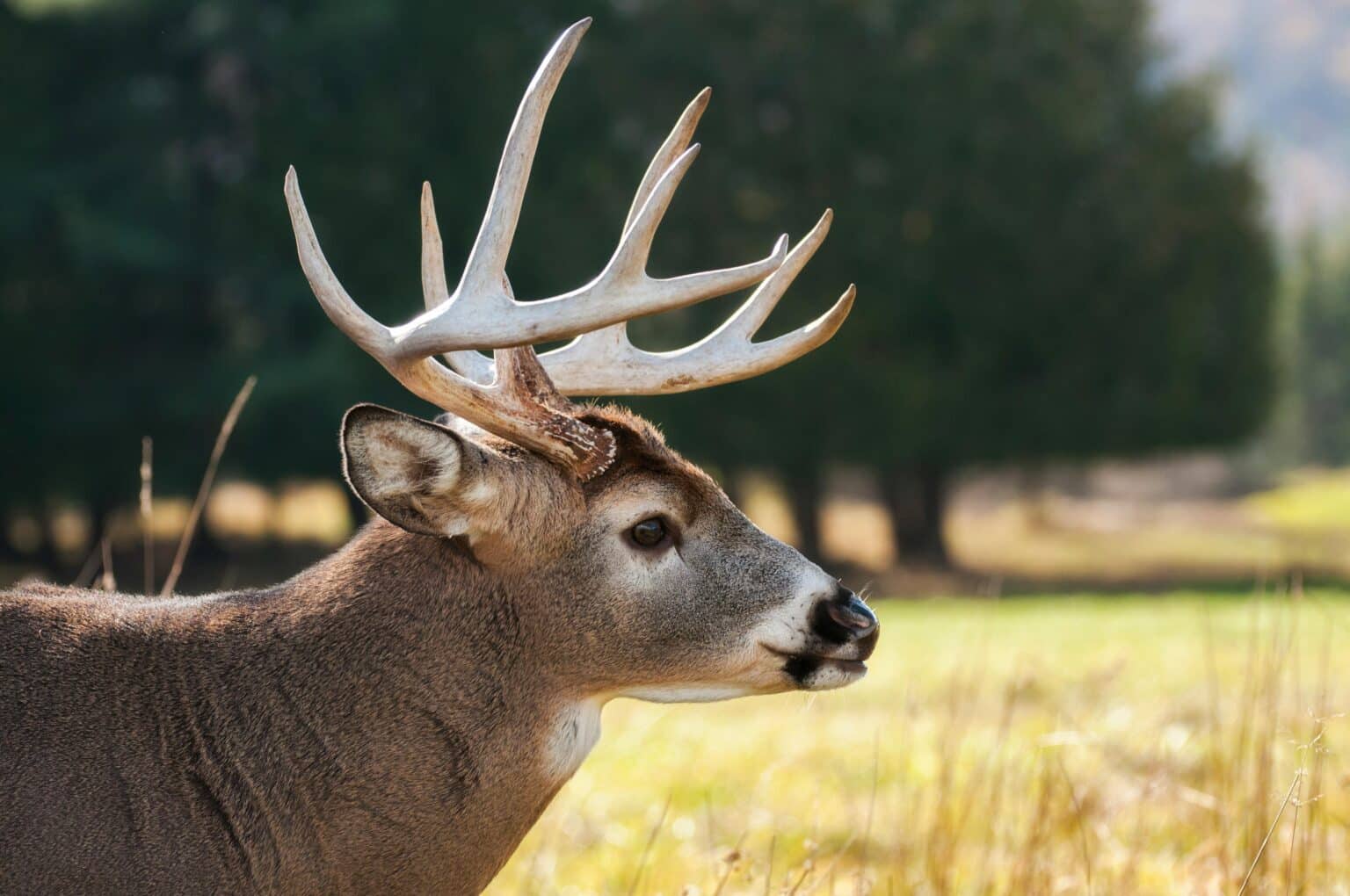Crisp, fall air means the beginning of hunting season, but does it also mean the end of allergy season? Not necessarily. There are many potential allergy triggers you can be exposed to while hunting, and it’s a good idea to be prepared.

Deer Allergies
Animal and pet allergies are pretty common: up to 20% of the global population suffers from an allergy to dogs or cats. But animal allergies can be triggered by any animal, and that includes deer.
Deer allergies, like any other animal allergy, are triggered by the animal’s skin cells, fur, saliva and urine—specifically, a protein found in the skin cells, fur, saliva and urine. When your body comes into contact with this protein, it incorrectly identifies the protein as a threat, like a virus or bacteria. To neutralize the perceived threat, the body launches an immune system response, which causes symptoms such as a runny nose, inflammation, sneezing and watery eyes.
What Is Dander?
Dander is the term used to describe the flaky, dead skin cells that build up under an animal’s fur. The dander will be shed along with the fur when the animal sheds its coat during seasonal changes, e.g., fall and spring.
You have a chance of coming into contact with dander anytime you touch an animal. Dander is very light, so rustling, handling or disturbing the animal’s coat can easily stir up dander and send it airborne. Once airborne, it can remain in the air for a long time, meaning you can breathe it in, or it could land on your skin or clothes.
What Are the Symptoms of a Deer Allergy?
Getting dander on your skin will prompt a skin reaction, and breathing it in will prompt a respiratory response. With that in mind, here are some of the most common symptoms associated with deer allergies:
- Skin rash or hives
- Runny nose
- Sneezing
- Itchy nose
- Nasal congestion
- Facial pressure
- Facial swelling
- Difficulty breathing
How Can I Manage My Deer Allergy?
It’s important to be prepared for your allergy symptoms; when you’re out in the field and far away from medical care, a severe allergic reaction could be dangerous. When packing for your hunting trip, bring allergy medications, such as antihistamines (Zyrtec, Aleve), and quick-relief options, including topical anti-itch cream and pain relievers. You may also need an inhaler if your allergies can trigger asthma symptoms.
Since itchy skin and skin rashes are the two most common symptoms of a deer allergy, bring what you need to cover up: rubber gloves that go up to the elbow to wear while dressing the deer, a face mask to filter out airborne dander, long-sleeved shirts and sunglasses, to name a few. The less skin you have exposed to dander, the lower your chance of a skin reaction.
If over-the-counter allergy medications and covering up aren’t giving you enough protection from allergy symptoms, consider immunotherapy, such as allergy shots or allergy drops. These treatments are reliable and long-lasting, as they decrease your body’s response to dander (or any other allergy trigger). For lasting allergy relief, schedule an appointment at Charleston ENT & Allergy today.
